The Double Fisherman’s Knot is used to create a strong connection between two ropes or to create a closed loop.
Despite its name, it’s rarely used by Fishermen. Instead, it’s commonly used in climbing, search and rescue, and other similar applications.
In other sources, it’s also sometimes referred to as the Double Fisherman’s Bend, Double Overhand Bend, or the Grapevine Bend.
Quick Guide: How to Tie a Double Fisherman’s Knot
The Double Fisherman’s Knot is formed by tieing two Double Overhand Stopper Knots opposite to one another.
Place both ropes (or both ends of a single rope) next to each other. Then wrap the first rope around the second one two times and pass the end of it through both formed loops. Then tighten it to create the first Double Overhand Knot. Now create a second Double Overhand knot by tieing the second rope around the first one. Then slide both of them together to finish the knot.
You can check that it’s tied correctly by inspecting both sides. It should form four parallel strands on one side of the knot and two X-shaped formations on the other.
Note that this knot should only be used with ropes of similar diameters. Otherwise, the smaller rope can slip through the Double Overhand Knot made by the larger one.
For critical applications, you should leave the working ends long to account for slippage. For extra safety, you can also tie an extra Double Overhand Stopper Knot on each side.
When this Knot is used for extra-heavy loads or with slippery ropes (for example, Dynema), you should use a Triple Fisherman’s Knot. It’s tied identically to the Double Fisherman’s Knot, except the rope is tied around the other one three times instead of two.
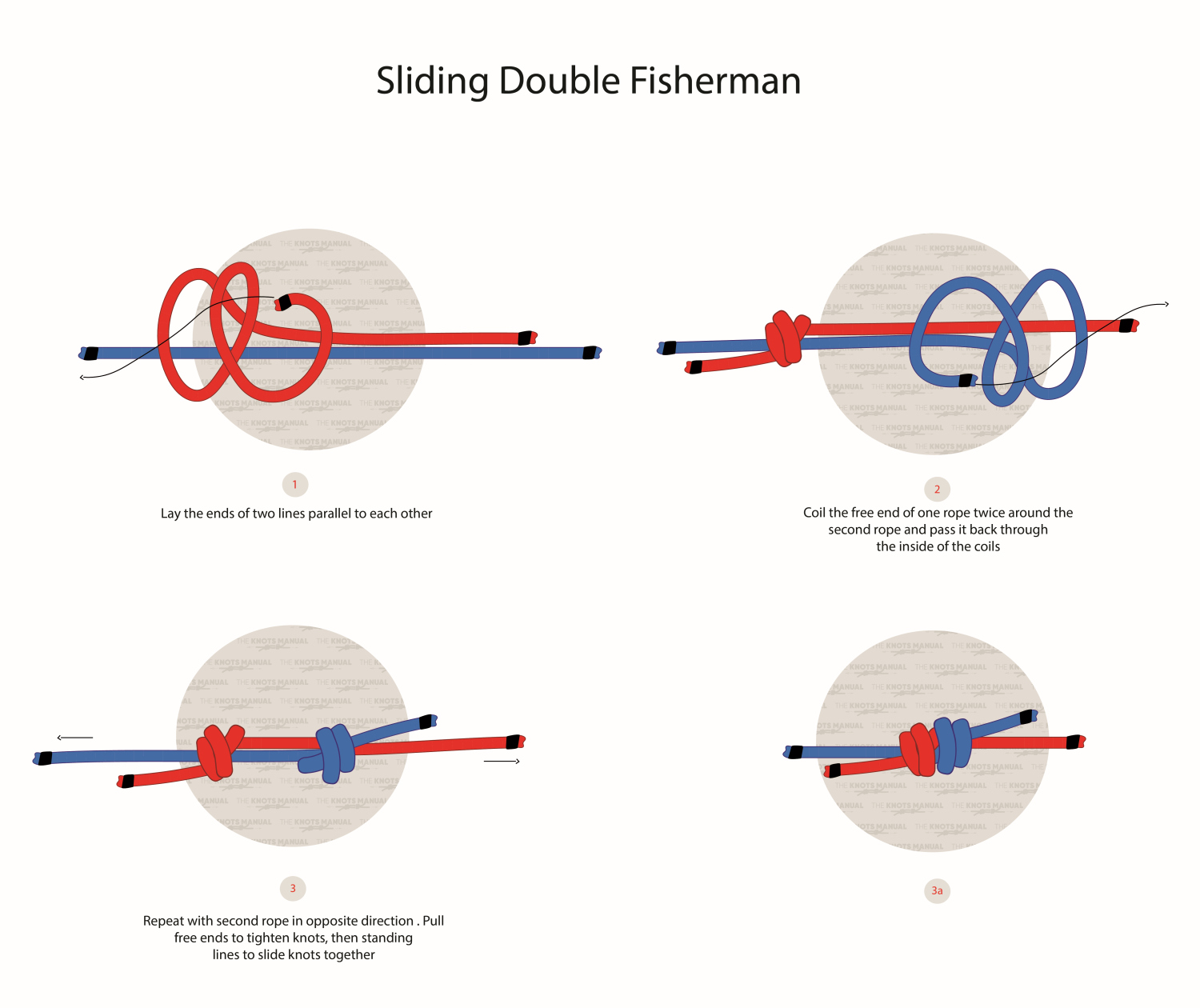
Pros and Cons of the Double Fisherman’s Knot
The Double Fisherman’s Knot is very simple and easily taught to amateurs. It’s also hard to tie wrongly and easy to check. That’s why nowadays, it’s one of the most popular knots for joining two ropes.
It’s also a very strong and reliable knot. If tied correctly, it can easily support body weight and heavier loads. It’s very unlikely to come undone, even with intermittent loads.
Another advantage is that the Double Fisherman’s Knot is very compact in its form. This makes it unlikely to catch against other objects (for example, when rappelling or belaying in rock climbing).
Its main downside is that it is very hard to untie. Once loaded, both Double Overhand Stopper Knots jam together very tightly. You can break them apart only by twisting and bending the knot.
What the Double Fisheman’s Knot Is Used For
The Double Fisherman’s Knot is mainly used for connecting two different ropes. Rock climbers use this knot for performing full-length, vertical rappels. But it’s also used by arborists, in caving, search and rescue, and other similar applications.
You can also create fixed loops using a shorter rope and a Double Fisherman’s Knot. It’s often used by rock climbers and mountaineers to create a Purisk Loop.
If you use an even shorter and smaller rope, then you can also use this knot to create bracelets, necklaces, and DIY grab handles.
Some climbers and arborists also use the Double Fisherman’s Knot to connect a rope to a carabiner. But there are other better knots for this application, like the Clove Hitch, the Halyard Knot, the Buntline Hitch, or the Anchor Hitch.
Knots Similar to the Double Fisherman’s Knot
Figure 8 Bend: This knot is also commonly used to connect two different ropes. It’s also a very strong bend, but the Double Fisherman’s Bend is stronger. Its main advantage over the Double Fisherman’s Bend is that it is much easier to untie and similarly easy to check.
European Death Knot: Other called the Flat Overhand Knot, it’s the most popular way of connecting two different ropes for climbing. It’s much less secure than the Double Fisherman’s Knot, but if tied correctly, can support the weight of a climber.
Fisherman’s Knot: This knot is tied identically to the Dobule Fisherman’s Knot, except the rope is tied around the other one only once, not twice. This creates two Overhand Knots, instead of Double Overhand Knots. It’s less secure but still considered a strong bend knot.
Triple Fisherman’s Knot: This is a more secure variation of the Double Fisherman’s Knot. In this variation, the rope is wrapped around the other one three times instead of two.
Zeppelin Bend: This bend is often used as an alternative to the Double Fisherman’s Knot. It’s similar in strength, only much easier to untie. Its only downside is that it has a wider profile that is more likely to get stuck on other objects.
Step-By-Step Guide: How to Tie the Double Fisherman’s Bend
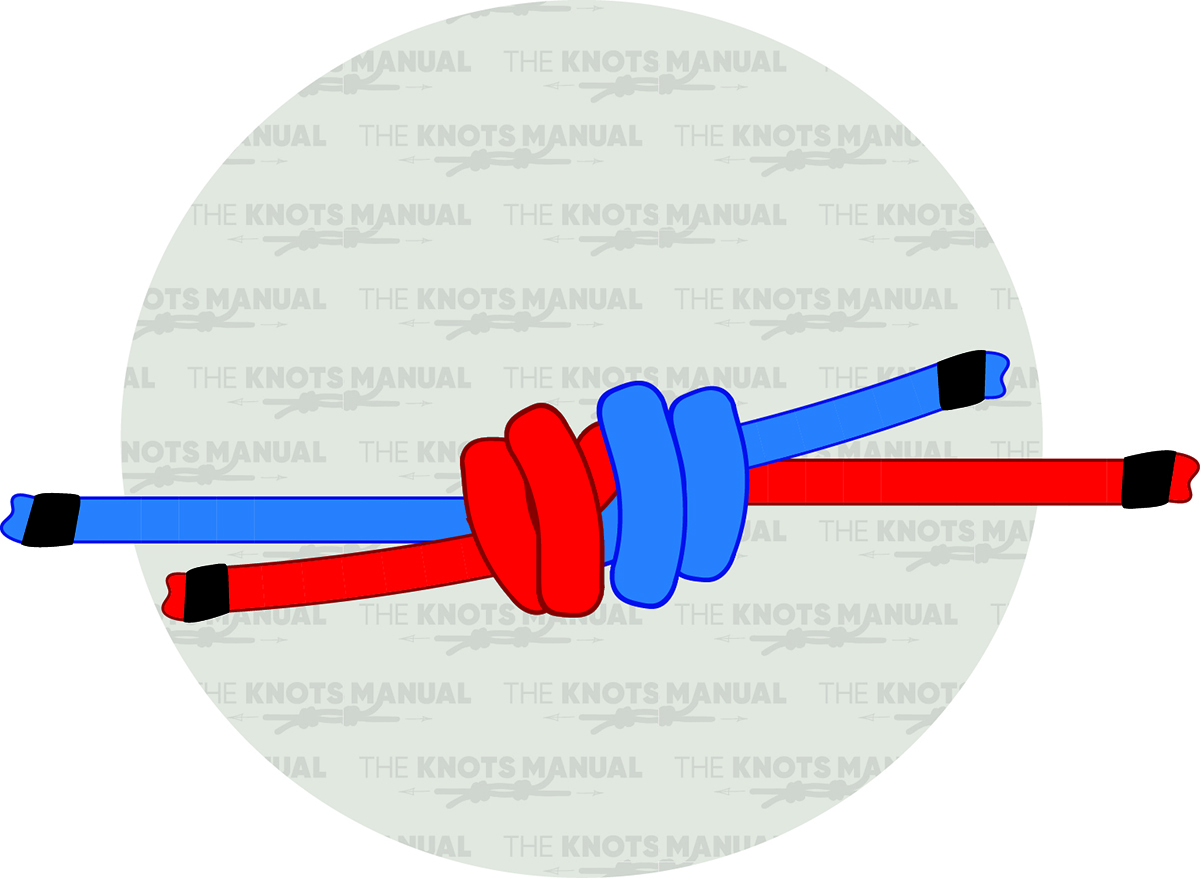
A step-by-step guide on how to tie a Double Fisherman’s Knot.
Step 1:
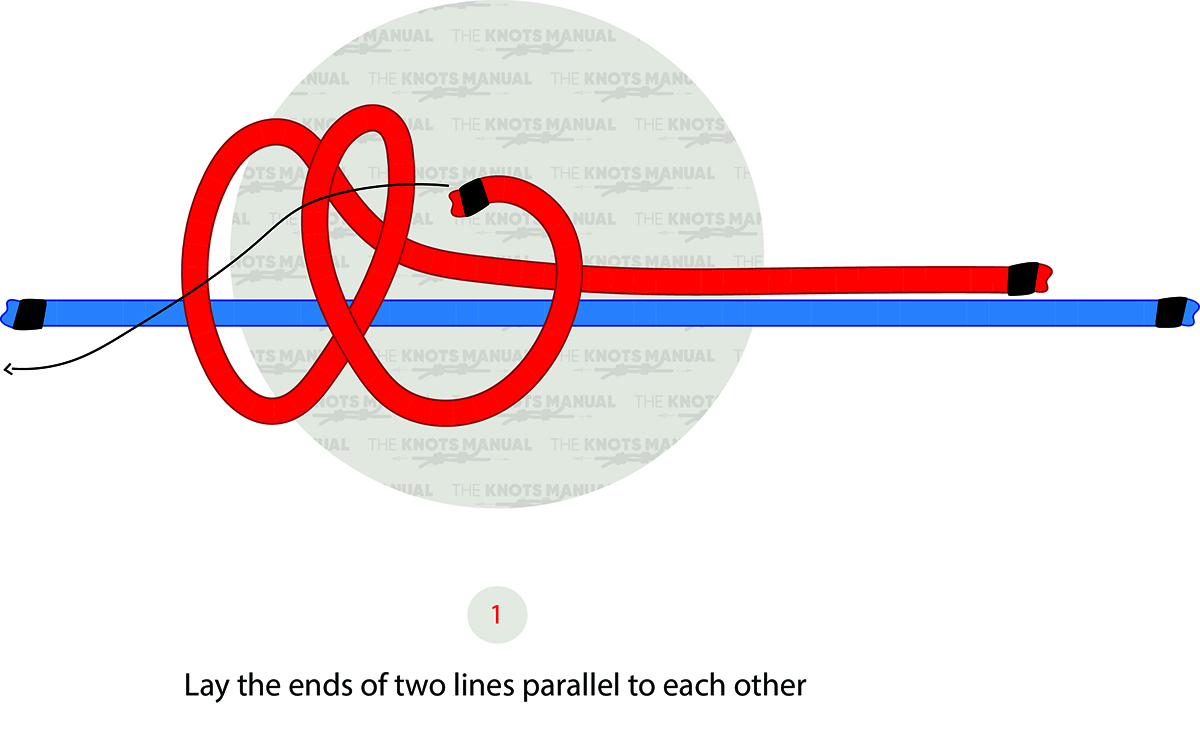
Place the working ends of both ropes next to each other. Then wrap the first rope around the second one two times, starting from the furthest end and going closer. Finally, pass the working end through these two loops and tighten the knot.
Step 2:
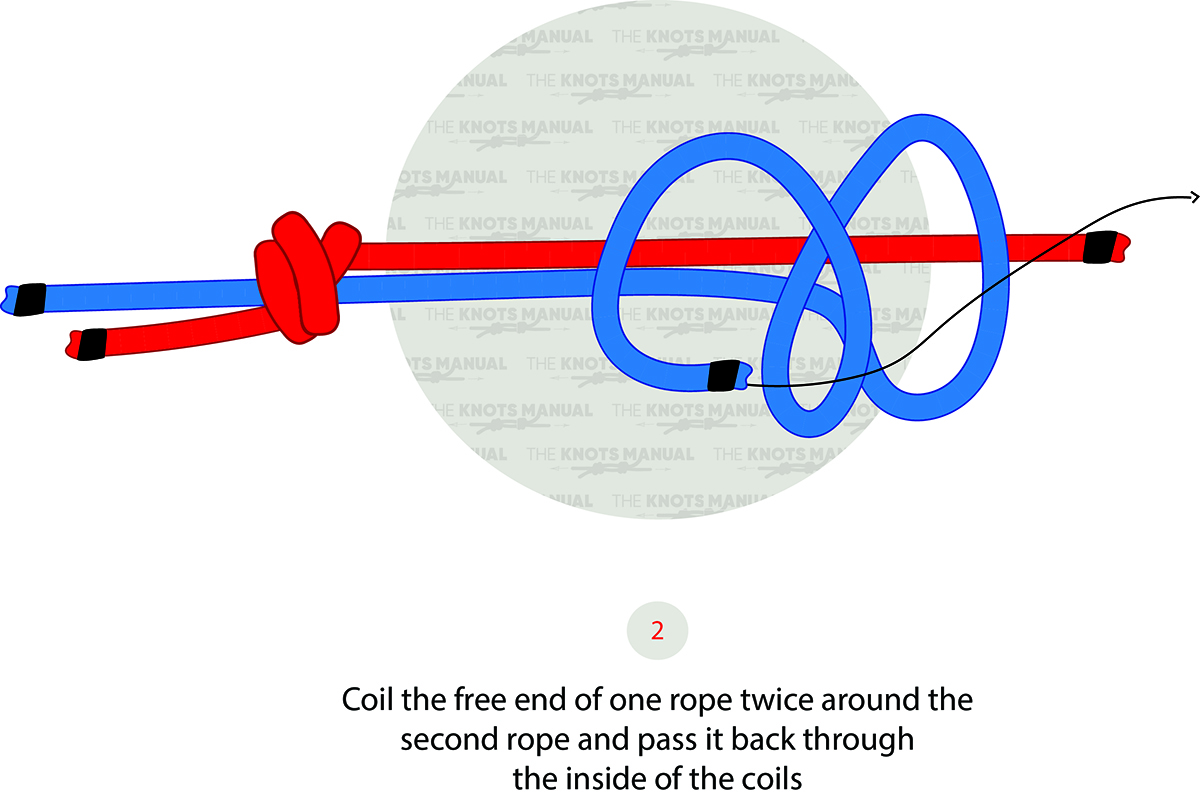
Make an identical knot in the other direction with the blue rope.
Step 3:
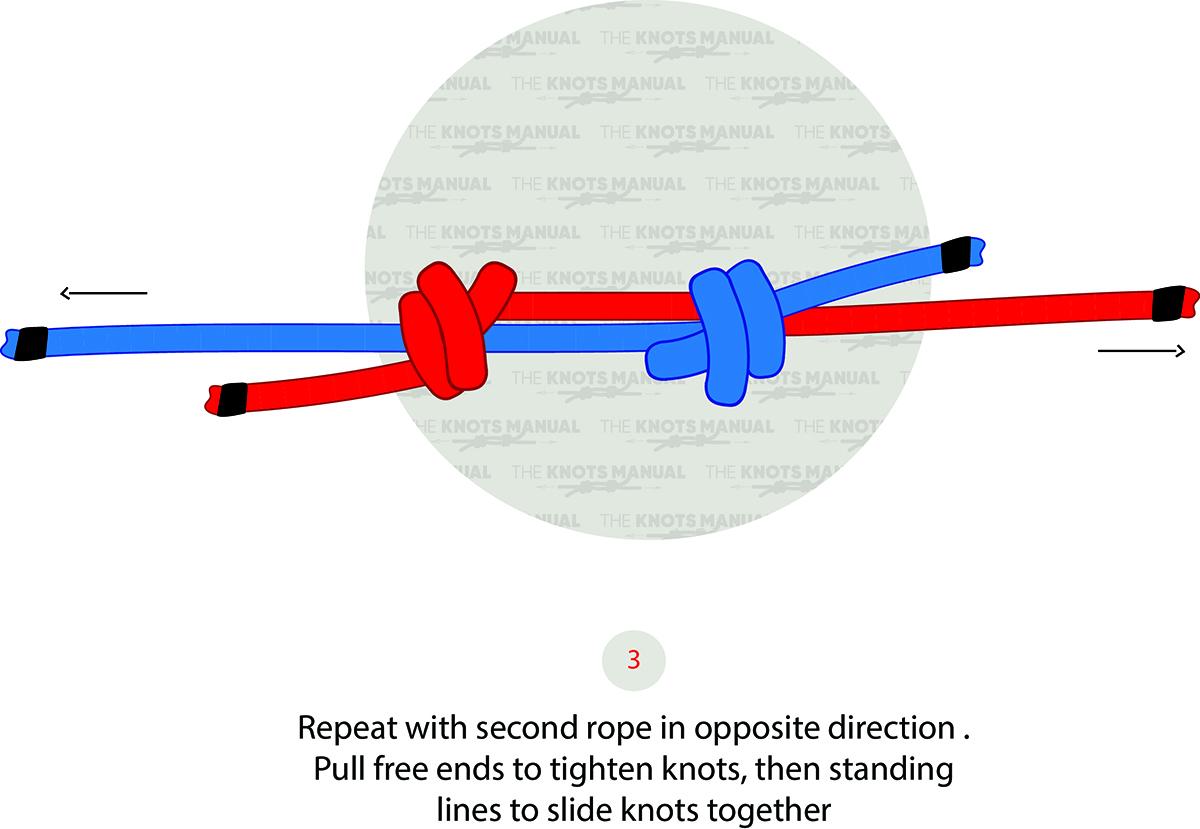
Tighten the knot by pulling the standing ends of both ropes.
Step 4:
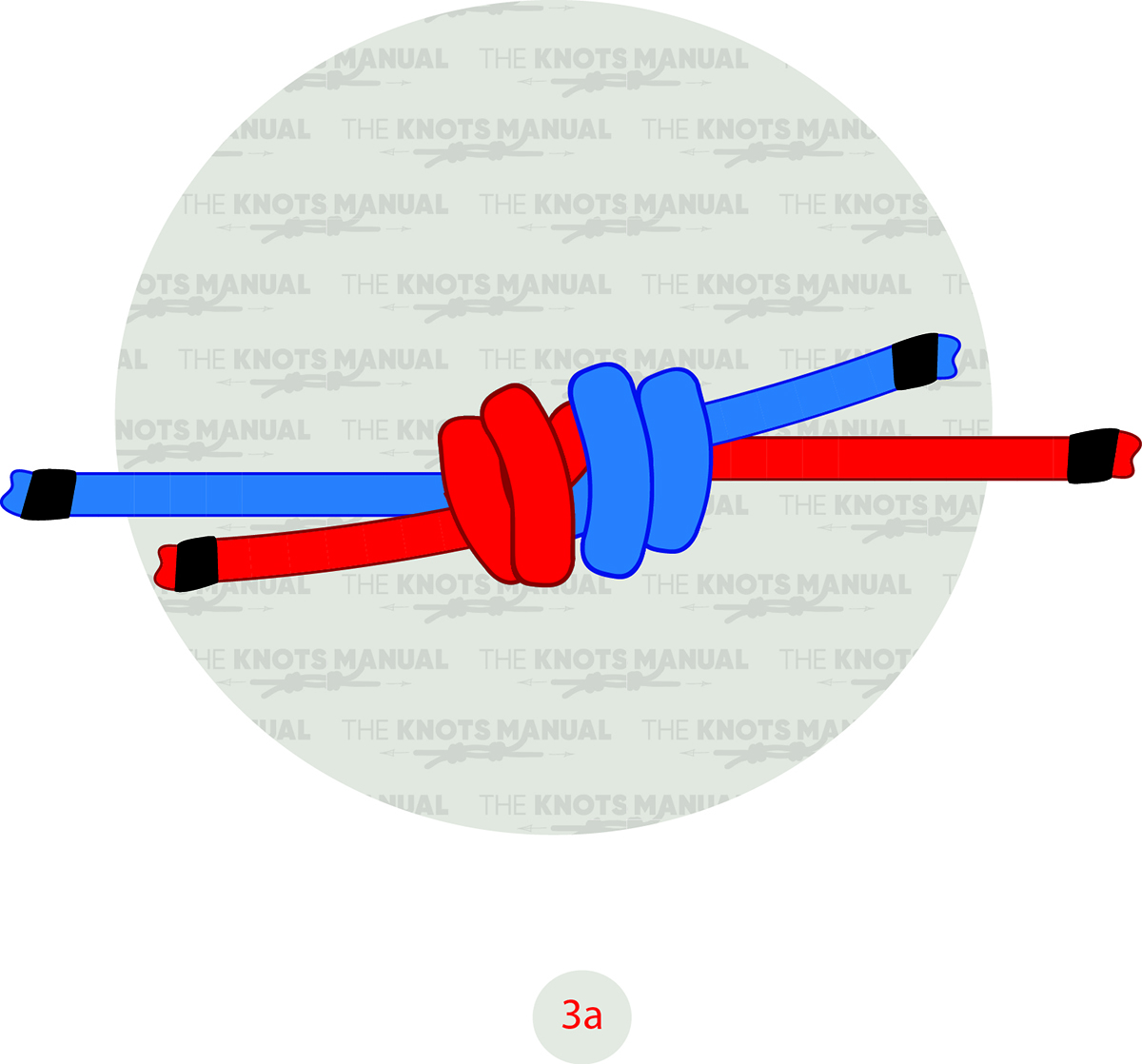
The finished knot should form 4 parallel stands on one side and 2 x-shaped knots on the other one.
Frequently Asked Questions
How Strong is the Double Fisherman’s Knot?
The Double Fisherman’s Knot is one of the strongest bend knots. It’s even used for load-bearing applications, as it’s very unlikely to come undone. But its strength is reduced if the knot is used with ropes of different diameters. So it should always be tied with ropes similar in diameter.
When Should You Use a Triple Instead of a Double Fisherman’s Loop?
The Double Fisherman’s Knot is strong enough to sustain moderately heavy loads. For hauling very heavy or critical loads, you can use the Triple or even Quadruple variations of the Fisherman’s Knot. You should also use these variations if you’re using a rope that’s made from a more slippery material, like Dynema.
